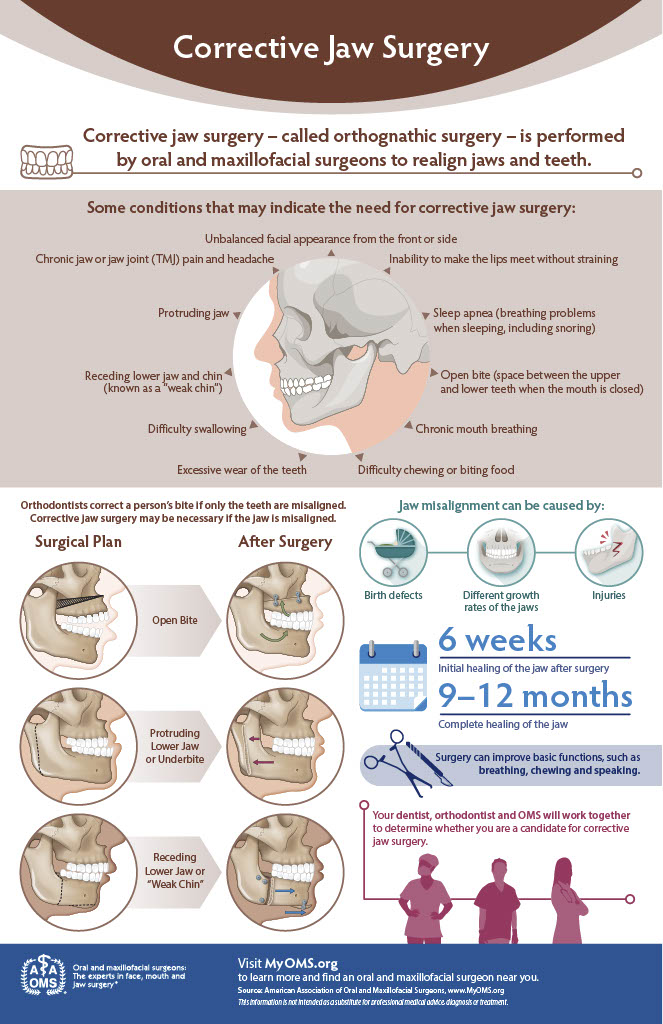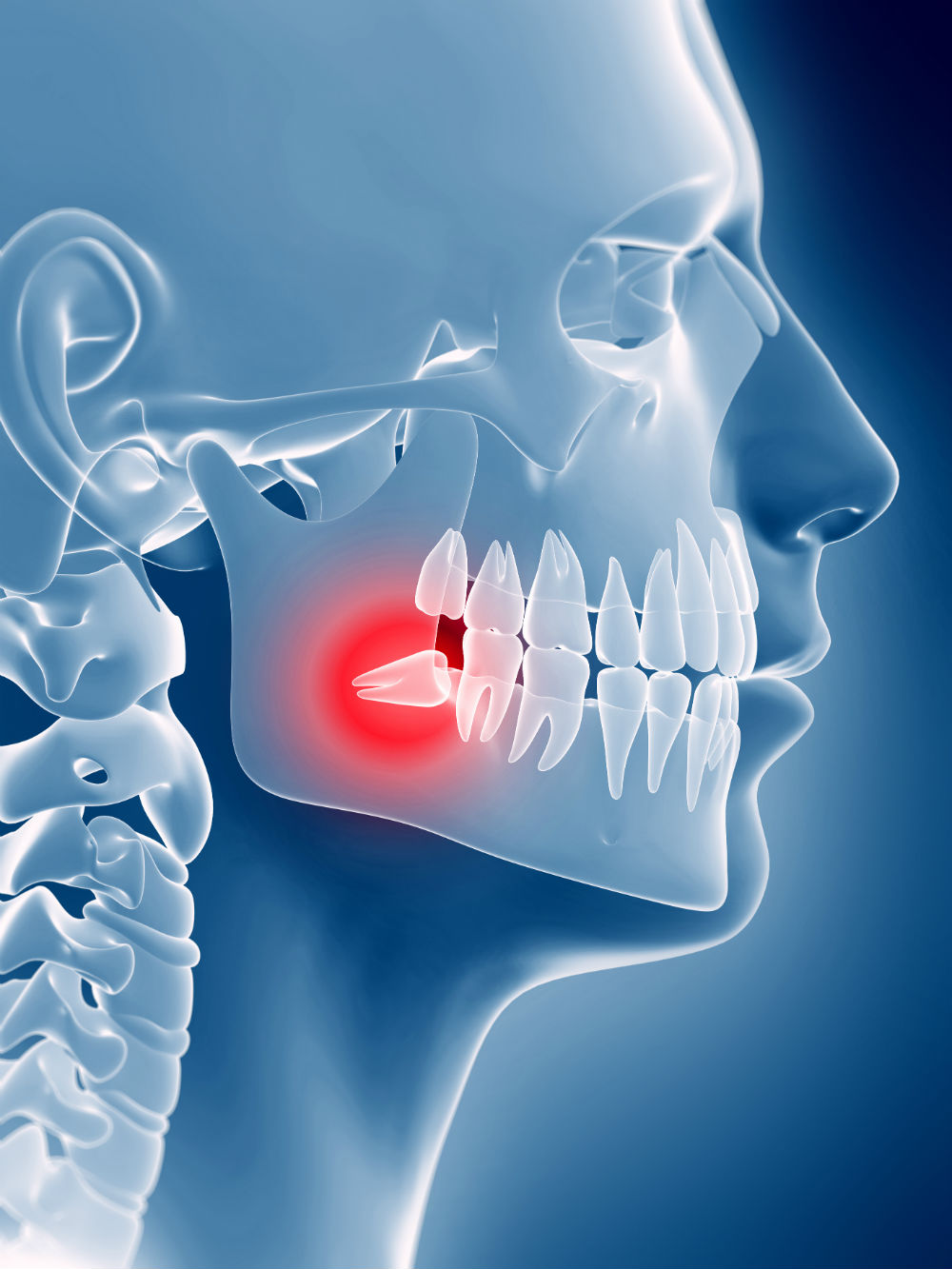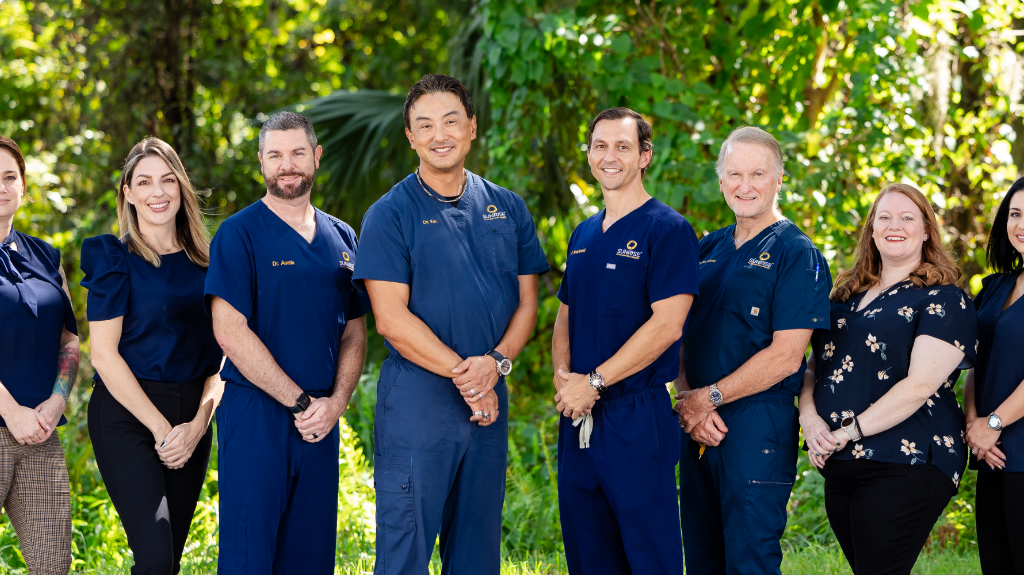
Jaw surgery, also known as Orthognathic Surgery, corrects irregularities of the jaw bones and realigns the jaws and teeth to improve the way they work that can’t be resolved with orthodontics alone. In most cases, you also have braces on your teeth before surgery, during recovery, and after surgery until healing and alignment are complete. And making these corrections may also improve your facial appearance.
People who can benefit from orthognathic surgery include those with an improper bite or jaws that are positioned incorrectly. Jaw growth is a gradual process, and in some instances, the upper (maxilla) and lower (mandible) jaws may grow at different rates. Generally, jaw surgery is appropriate after growth stops, usually as teenagers to young adults. We have had patients in their 30-40’s that were good candidates; this is on a case by case basis and would be up to the surgeon’s discretion.
The following are some of the conditions that may indicate the need for corrective jaw surgery:
- Lower jaw too far back
- Lower jaw too forward
- Open bite (teeth don’t meet)
- Protruding jaw
- Receding lower jaw or chin
- Difficulty chewing or biting
- Difficulty swallowing
- Chronic mouth breathing
- Sleep apnea (breathing problems when sleeping, including snoring)

Check out my next blog, How do you know if you need jaw surgery?



